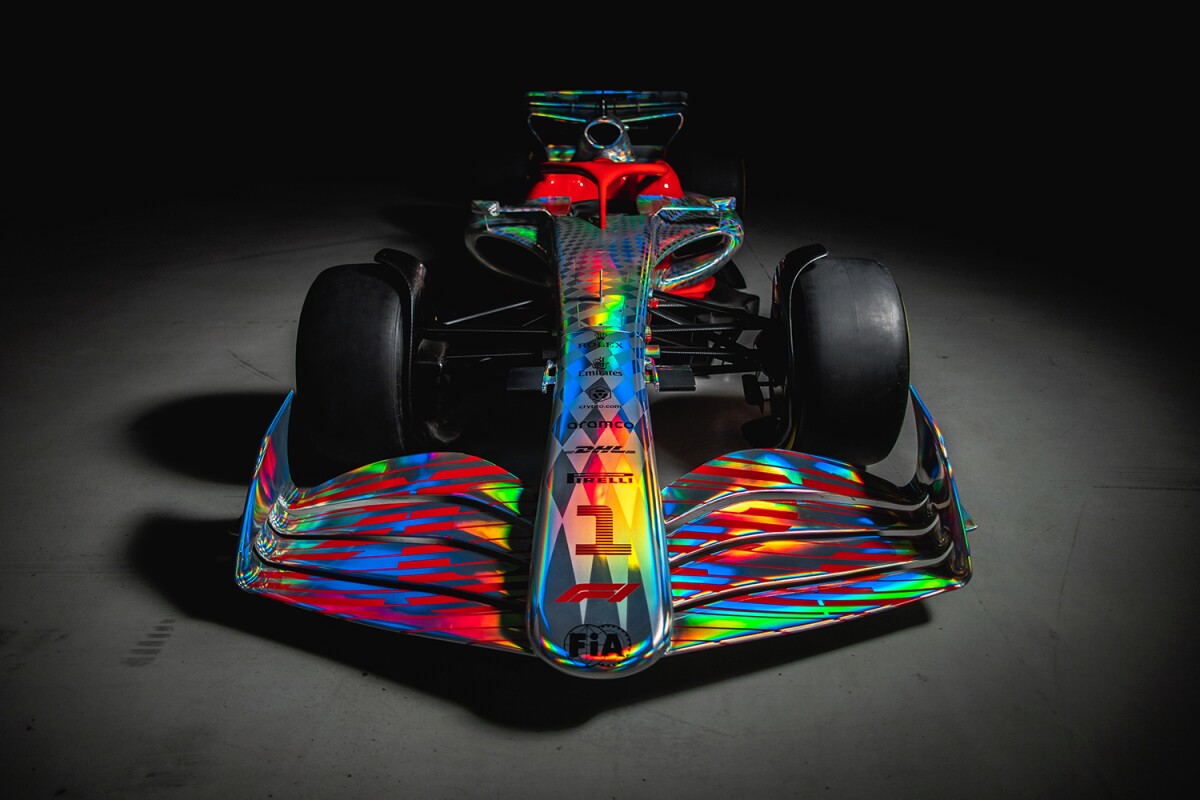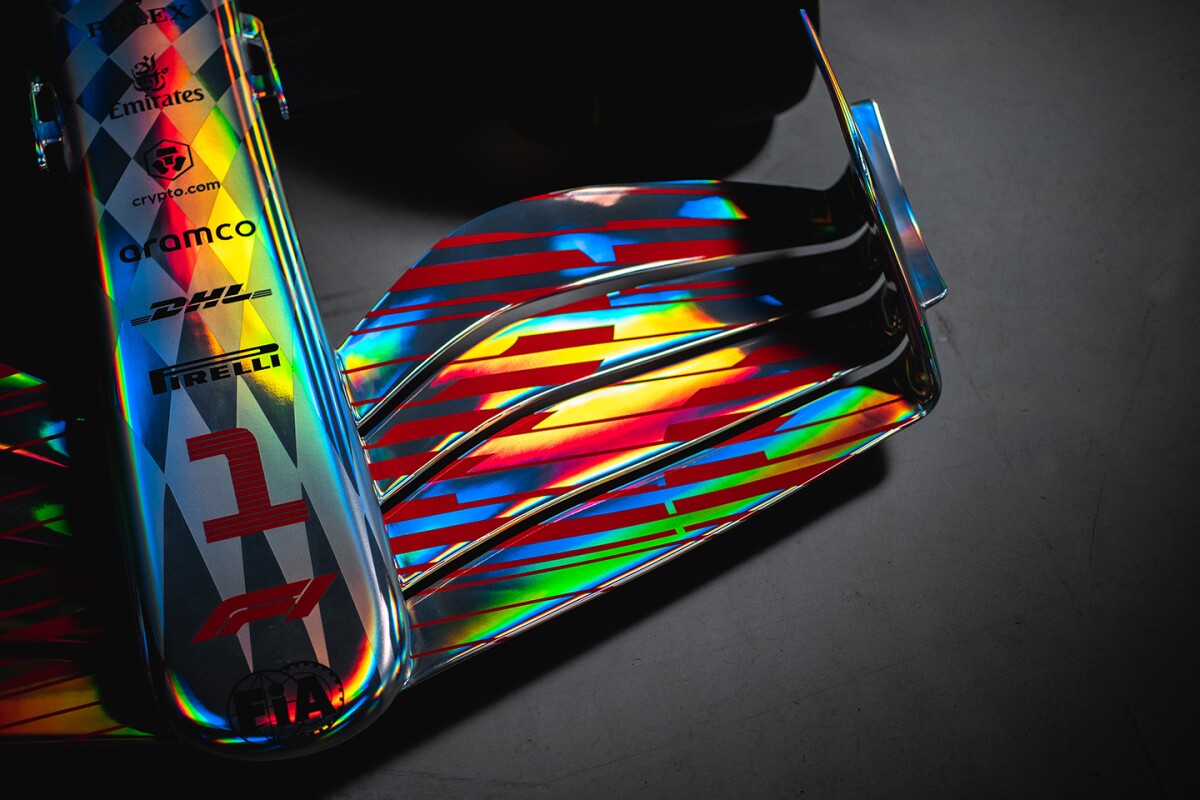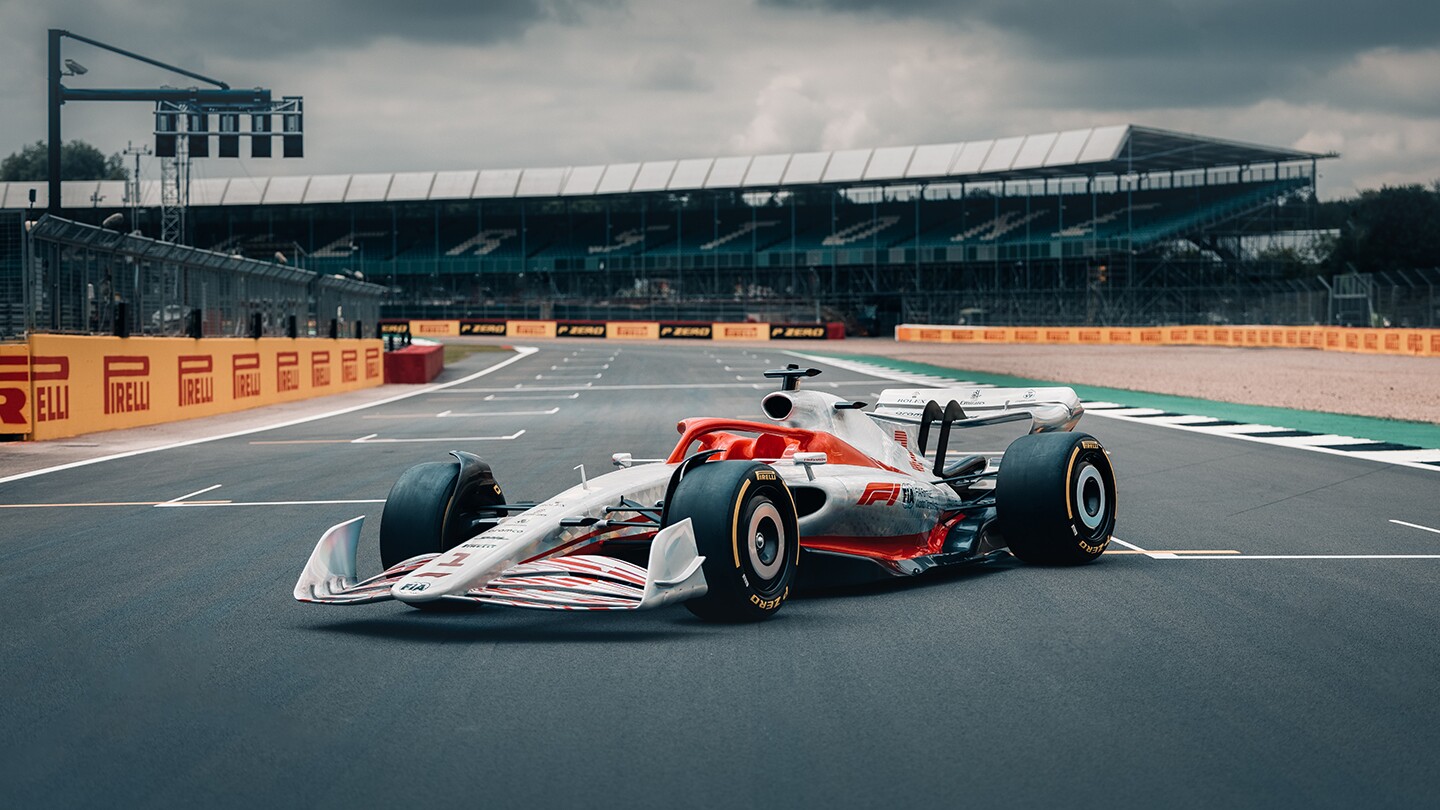When the 2022 FORMULA 1 (F1) racing season revs up in March, teams will take to the track with newly designed cars engineered to give fans — and drivers — more of the wheel-to-wheel action they’ve been seeking.
“Anybody who has followed the sport has heard drivers complain on the radio about not being able to get close enough to the car in front of them,” explains Simon Dodman, principal aerodynamicist at F1. “Essentially what they're reporting in those situations is a lack of grip, or downforce.”
Anybody who has followed the sport has heard drivers complain on the radio about not being able to get close enough to the car in front of them. What they're reporting in those situations is a lack of grip, or downforce.
F1 cars are the fastest regulated road-course racing vehicles in the world. While these open-wheel automobiles are only 20 to 30 kilometers (or 12 to 18 miles) per-hour faster than top-of-the-line sports cars, they can speed around corners up to five times as fast due to the powerful aerodynamic downforce they create. Much like the way that aircraft generate lift through their wings, F1 cars use a similar mechanism, except inverted, to generate the downforce they need.
Cars lose up to 50% of this downforce when racing closely behind another car due to the turbulent wake generated by wings and bodywork. Turbulence from the leading car causes the trailing car to slide and lose its grip on the track. The driver behind senses a loss of grip earlier than the driver in front and, ultimately, has to take his foot off the accelerator.
“This loss of downforce means that even the best drivers in the world can’t overtake the car in front of them, ” says Neil Ashton, a former FORMULA 1 engineer who today is principal computational fluid dynamics (CFD) specialist for Amazon Web Services (AWS).
“It's as simple as an object moving through a fluid — whether that's air or water — and creating a disturbance behind it,” Dodman adds. “Think of a speedboat rushing by on a completely calm lake. Basically, cars do the same through air. The faster cars go, the more downforce they make, and the bigger the wake behind them becomes. And wake is detrimental to what’s behind it. Imagine trying to drive a speedboat behind another speedboat and bouncing around in the water — it’s the same with race cars.”
"Nobody designs a car to come in second"
Over the past three years, the F1 engineering team has collaborated with AWS to explore the science of how cars interact when racing in close proximity and, ultimately, develop new design specifications to deliver a more competitive racing spectacle for fans while keeping drivers safe.
“One criticism often leveled against FORMULA 1 is that, at times, it can be processional and easy to predict who will win on a given race weekend by virtue of the fact that it's quite a cyclical sport in terms of competitiveness,” Dodman said. “Fans want to watch an exciting race with lots of overtaking and, quite simply, the sport hasn’t delivered that. We recognized things had to change to level the playing field and deliver a more compelling spectator experience.”

The F1 engineering team was tasked with designing a car that can produce a smaller wake, while maintaining the degree of downforce and peak speeds, but is also not adversely affected by driving through another car’s wake.
“Nobody designs a car to come in second,” observes Pat Symonds, chief technical officer at FORMULA 1. “But for this project, we were looking at how cars perform in the wake of another car, as opposed to running in clean air.”
Instead of relying on time-consuming and costly physical tests, F1 used computational fluid dynamics, which provides a virtual environment to study the flow of fluids (in this case the air around the F1 car) without ever having to manufacture a single part. By numerically solving a form of the Navier-Stokes equations, companies like FORMULA 1 can study the complex nature of turbulent flows from their laptops.
"A lot of complex physics"
“There are a lot of complex physics involved with how a F1 car moves around a corner, which creates a massive computational challenge with a huge matrix of scenarios,” Ashton said. “This meant that F1 needed access to very large high performance computing (HPC) resources.”
The project kicked off with F1 using CFD at a third-party facility, which meant sharing capacity with other customers and, as a result, limiting the quantity and quality of simulations. Dodman’s team ultimately transitioned to a HPC platform on AWS, using AWS ParallelCluster and a combination of Amazon Elastic Compute Cloud (Amazon EC2) instances including AWS Graviton2-based C6gn instances to run complex simulations modeling the turbulence wake of cars and the impact on trailing cars.
“Moving to AWS enabled us to break away from that serial model and run lots of cases at once without having to queue behind other customers,” Dodman said. “This meant the time between receiving and analyzing results and moving to the next step was much shorter. We were able to shortcut a lot of the process.”
Customers use AWS for CFD projects to design everything from aircraft to medical devices. While the most powerful desktops have around 64 processing cores, F1 engineers had access to more than 2,500 AWS cores for every run — often with many jobs running simultaneously.

“We quickly realized that the only way we were going to make inroads was to do as many simulations using CFD as possible,” Dodman said. “By using the hugely scalable compute resource AWS offers, we were able to do far more runs and come to conclusions and solutions a lot faster.”
Running the project with AWS removed all barriers related to time and computing capacity, reducing the average simulation run time from 60 hours to 12. It also reduced the cost of running workloads by 30%, delivering supercomputer-level performance for a fraction of the budget.
F1 originally planned to run 20 or 30 simulations a week, but was able to increase that to between 80 and 90 with AWS. “And with access to much more compute resources than even the [F1 racing] teams have, we're able to run two-car simulations and look at the problem in a way that has never been done before,” Dodman added.
Massive data
AWS enabled F1 to run more than 5,000 single- and multi-car simulations over six months, yielding 550 million data points. These insights led to Fédération Internationale de l'Automobile (FIA is the governing body of motor sport) design specifications for a next-gen car with only 15% downforce loss at a one-car-length distance. F1 teams are currently using the regulations to design cars for the 2022 season.
We're confident drivers will be able to race more closely, with potential for far more overtaking.
New robust aerodynamic features include wheel wake control devices; a simplified front wing that diverts airflow off the front wheels; a more sculpted rear wing to effectively draw air in from the sides and lift it above the car following behind; simplified suspension; and underfloor tunnels. For the first time, all F1 cars will run on 18-inch wheels (up from 13 inches) with low-profile tires.
This will reduce turbulent airflow from the car ahead, increasing downforce of the following car, and allowing it to close the gap and potentially overtake the leader.
“The new design lifts a car’s wake higher so the following car can drive under it rather than through it,” Dodman said. “We're confident drivers will be able to race more closely, with potential for far more overtaking. And with less distance between the fastest and slowest cars on the track, we see more opportunity for different teams to win week to week.”

F1 tested and verified the new design in a wind tunnel. “They found the correlation between the simulation data and the test was very good, which proved that you can do a complicated, high-fidelity engineering design project in CFD,” Ashton said.
F1 are now starting the process of looking into AWS machine learning services such as Amazon SageMaker to help to optimize the design and performance of the car by using the simulation data to build models with additional insights.
“It’s still early days,” Ashton concluded, “but machine learning is proving to be a compelling additional reason to collaborate with AWS and I’m excited to see what we can achieve together.”






